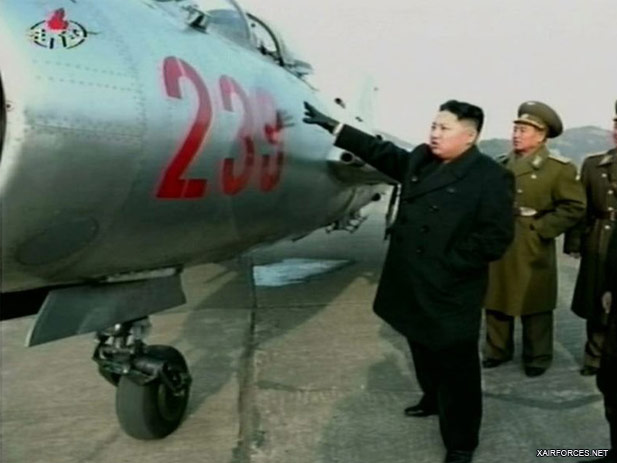With all the (worrying) Hot Air coming out of North Korea ... what's the collective view on the capability of their Air Force. I appreciate they are said to have all sorts of biological and fissionable nasties ... but let's keep to "conventional" capability.
 A few basics ...
A few basics ...
Fighter aircraft: 484
Only 23 are known to be operational. 7 MiG-29s, and 16 MiG-23
Strike aircraft: 194
Less than 11 are known to be operational. All are SU-25s.
Trainer aircraft: 357
Less than 30 are known to be operational.
Transport aircraft: ~500
Less than 30 are known to be operational. 2 Il-76MDs, < 4 Mi-8s, < 20 Mi-2s
Other: 82+
Less than 19 are known to be operational. 1 Antonov An-24, and 18 MD-500D
Total: around 1,500
Flyable Total: around 110
Annual flying hours ...
The number of annual flying hours (AFH) per pilot is, like almost every other aspect of the KPAF, very hard to estimate. Most sources on the subject abstain from giving hard numbers, but all of them estimate the average annual flying hours per pilot as being 'low' to 'very low'. The number of annual flying hours is of course very important in estimating the individual skill and experience of the pilots of an air force and the general rule of thumb is 'the more the merrier'. Most estimates present a rather grim picture: AFH per pilot for the KPAF are said to be only 15 or 25[4] hours per pilot each year - comparable to the flying hours of air forces in ex-Soviet countries in the early 1990s. In comparison, most NATO fighter pilots fly at least 150 hours a year. Ground training, both in classrooms, on instructional airframes or in a flight simulator can only substitute for 'the real thing' to a certain degree, and the low number of modern jet trainers in the KPAF arsenal points to a very modest amount of flying time for the formation of new pilots.
There are a number of possible explanations for the low AFH: concern over the aging of equipment, scarcity of spare parts - especially for the older aircraft - difficulties with worn airframes, fear of defection and the scarcity of fuel are all contributing factors. It is very likely however that some 'elite' pilots and regiments receive considerably more flying hours. Especially those equipped with modern aircraft and tasked with homeland defence - like the 57th regiment flying MiG-29s and the 60th regiment flying MiG-23s - are receiving multiple times the average AFH per pilot; however, aging equipment, the scarcity of fuel and the general economic crisis in the DPRK will affect these regiments as well, and keep their AFH low compared to NATO AFH.
The Chosun Ilbo reported on March 29, 2012 that the KPAF had dramatically increased the number of flights to 650 per year. However the number of flights actually recorded and tracked by USA and South Korean Satellites was less then 340. 200 of those flights were to Mainland China.
On January the 23rd of 2013, the CIA released that only 10-20% of the North Korean Military is capable of actually fighting a war, and less then 25% of all static defenses are actually functional.
Based on the above ... actual capability appears a bit sus ... but in the hands of fanatics perhaps a different story ?
Source Wikipedia so data may be of varying quality/authority.
Wikipedia KPAF
Coff.